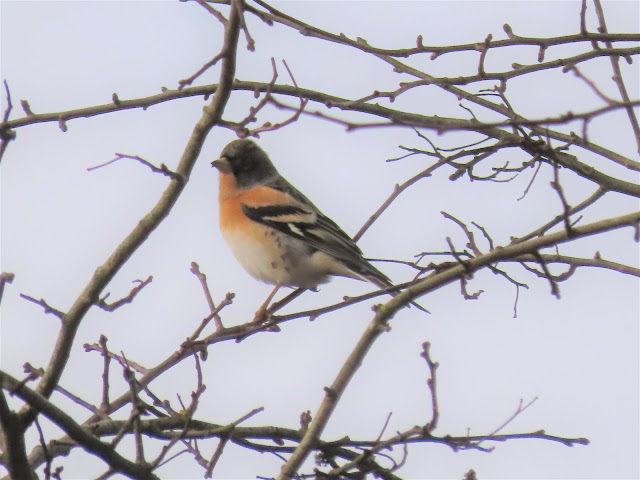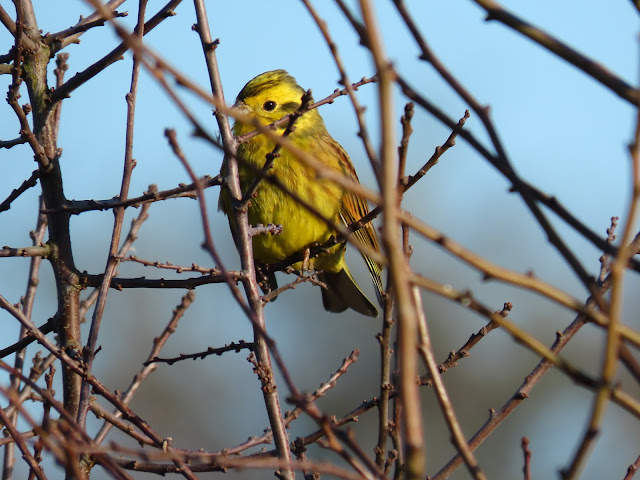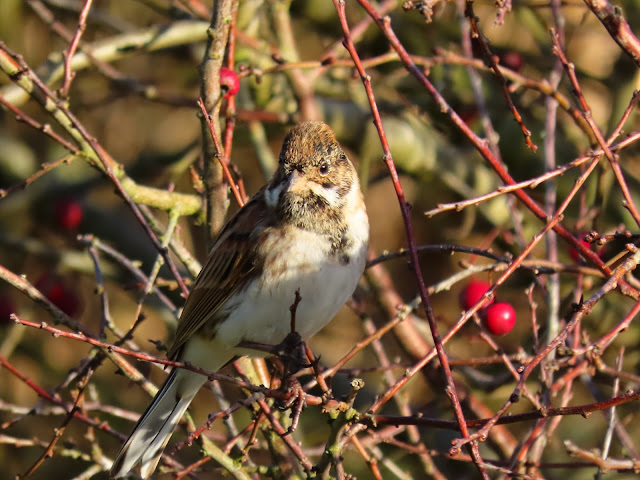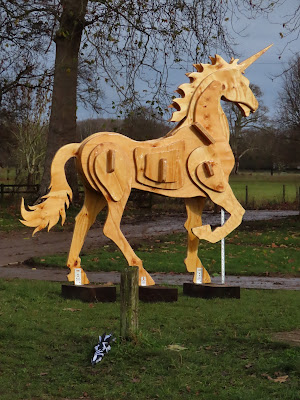A trip into the Cotswolds brought me what will surely be my final bird species of the year.
I'd been reading about a large flock of chaffinches and bramblings in a set aside field which often rested in the nearby hedges and having realised it was fairly easy to get to, decided to attempt to get my 150th species of the year; a smaller number than last year but that is probably unsurprising due to this year's restrictions on travelling. With some free days after Christmas due to not being able to make my usual visit to my sister in Cambridgeshire , I drove along exceptionally quiet roads for 35 minutes to the site mentioned on the birding blog. It was a pretty drive over the Cotswold hills, where there had been evidently more snow than at home. I even noticed a snowman at at road junction!
Turning off the main road I saw a group of 3 birders who had evidently had the same idea as me and made it very easy to locate the exact spot to look. I parked on the grass verge and crossed the road to view the set aside field, which had a short line of trees and bushes starting at the roadside and continuing a short way jutting out into the field. There was a lot of activity and I soon spotted my first brambling amongst the many chaffinches. It was, however, going to be hard to get any decent photo owing to the distance from me. The other three birders who were evidently together had just decided to venture into the field itself when another car stopped. The occupant got out and informed us we would have a much better opportunity if we walked a few metres up the road which we all did, and found an entrance into the field which had obviously been trampled down by recent birders!! This second part of the field was proving equally popular with the finch flocks, and it was possible to get slightly closer. Hence I managed a few record shots but nothing more. After watching them for a while, my feet were becoming decidedly cold so I went back to the car to return home,















































.JPG)
